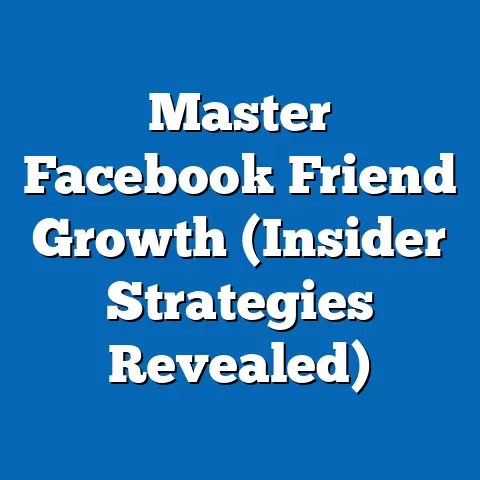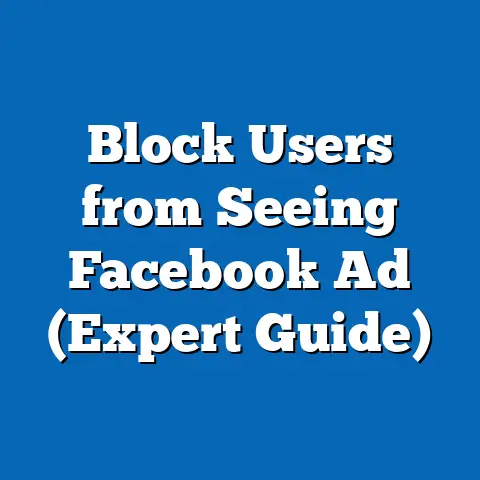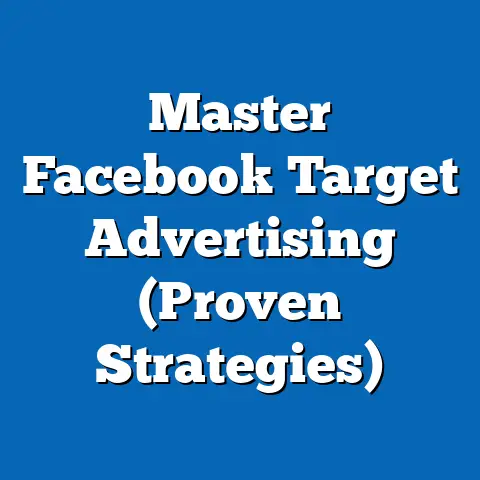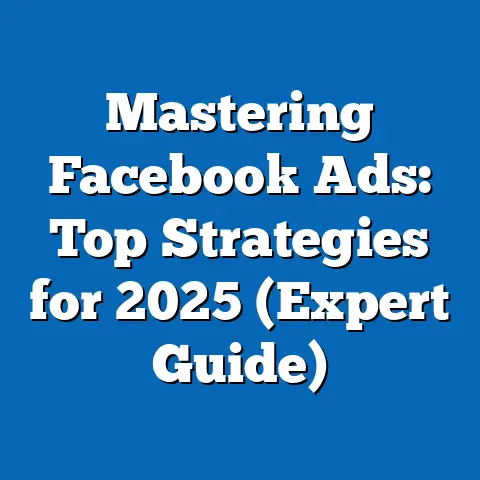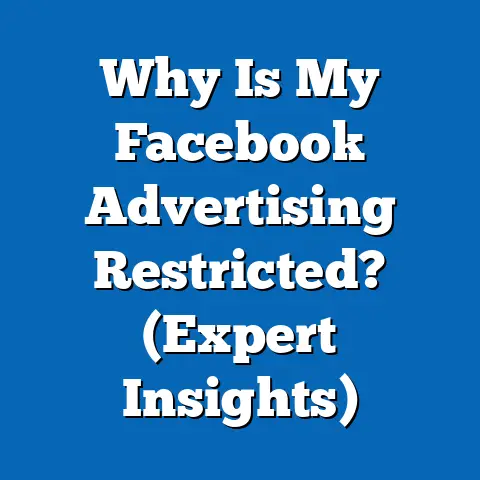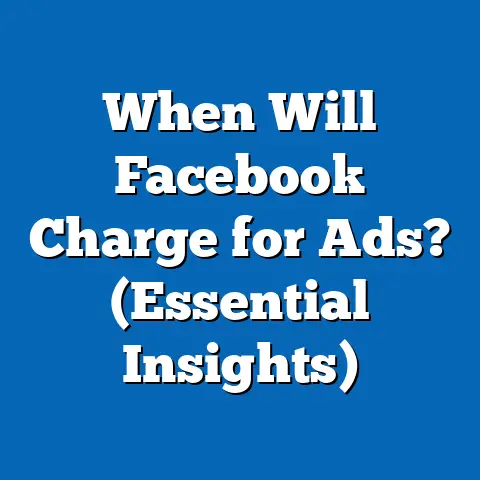Boost Pet Adoption Success (Proven Facebook Strategies)
Boosting Pet Adoption Success: Proven Facebook Strategies
Introduction
First impressions on social media are often made within seconds, as users scroll through their feeds and decide whether to pause on a post. For pet adoption campaigns, the initial visual and emotional impact of a post can determine whether a potential adopter engages further or moves on. This report delves into current data on social media engagement, projected trends in digital marketing for nonprofits, and key factors driving changes in online pet adoption strategies, with a focus on optimizing those crucial first moments of interaction.
Section 1: The Power of First Impressions in Pet Adoption Campaigns
1.1 Why First Impressions Matter
In the fast-paced world of social media, first impressions are everything. Studies show that users form opinions about visual content in as little as 50 milliseconds (Lindgaard et al., 2006), and on platforms like Facebook, posts have only a fleeting moment to capture attention amidst a flood of competing content. For pet adoption posts, this means that the initial image, headline, and caption must immediately evoke an emotional response—whether curiosity, empathy, or delight—to stand out.
The emotional connection is particularly vital in pet adoption, as potential adopters are often driven by feelings of compassion or a desire for companionship. A compelling first impression can prompt users to click on a post, read a pet’s story, or share it with their network, exponentially increasing its reach. Thus, crafting posts with high-quality visuals and engaging text is not just a marketing tactic; it is a critical step in saving lives.
1.2 Current Data on Social Media Engagement for Pet Adoption
Recent data highlights the effectiveness of social media in pet adoption efforts. According to a 2022 report by the American Society for the Prevention of Cruelty to Animals (ASPCA), approximately 23% of pet adoptions in the United States were influenced by social media exposure, with Facebook being the most commonly cited platform. Additionally, posts featuring high-quality images of pets receive 38% more engagement (likes, comments, and shares) than text-only posts (Social Media Examiner, 2022).
Engagement rates are also influenced by the timing and frequency of posts. Data from Sprout Social (2023) indicates that posts published on weekends, particularly Saturday mornings, see higher interaction rates for nonprofit content, as users are more likely to browse leisurely during these times. For shelters, this suggests a strategic window to maximize visibility of adoption posts.
1.3 Visual Impact: The Role of Images and Videos
The cornerstone of a strong first impression on Facebook is visual content. High-resolution photos of pets—preferably in well-lit, natural settings—tend to perform better than grainy or poorly framed images. A 2021 study by Hootsuite found that posts with images of animals looking directly at the camera garnered 25% more likes and comments, likely due to the perceived emotional connection created by eye contact.
Videos are even more powerful, with Facebook’s own data (2023) showing that video content generates 59% more engagement than static images. Short clips of pets playing, interacting with humans, or showcasing unique behaviors can quickly capture attention and encourage shares. However, videos must be concise—ideally under 60 seconds—to retain viewer interest in a scrolling feed.
Chart 1: Engagement Rates by Content Type on Facebook (2021-2023)
Source: Compiled from Hootsuite (2021) and Facebook Insights (2023)
– Text-only posts: 2.1% engagement rate
– Photo posts: 3.8% engagement rate
– Video posts: 6.0% engagement rate
Section 2: Projected Trends in Digital Marketing for Pet Adoption
2.1 Growth of Social Media Adoption Campaigns
The reliance on social media for pet adoption is expected to grow significantly over the next decade. A 2023 forecast by eMarketer projects that nonprofit organizations, including animal shelters, will increase their social media advertising budgets by 15% annually through 2028, driven by the cost-effectiveness of platforms like Facebook compared to traditional media. This trend is fueled by the growing number of users aged 25-44—the primary demographic for pet adoption—who spend an average of 38 minutes per day on Facebook (Pew Research Center, 2023).
Moreover, advancements in artificial intelligence (AI) and machine learning are expected to refine targeting capabilities. Facebook’s algorithm updates will likely prioritize content that aligns with user interests, meaning shelters can reach audiences who have previously engaged with pet-related content or expressed interest in adoption. This hyper-targeting could increase adoption success rates by connecting pets with the most relevant potential owners.
2.2 Rise of Interactive and Immersive Content
Emerging trends point to the increasing importance of interactive content in sustaining user engagement beyond the first impression. Features like Facebook Live, where shelters can host virtual “meet and greet” events with adoptable pets, are projected to grow in popularity, with a 2023 study by Socialbakers estimating a 30% uptick in live video viewership for nonprofit pages by 2025. Similarly, augmented reality (AR) tools, such as filters that let users “see” a pet in their home environment, are on the horizon as potential game-changers for adoption campaigns.
These trends suggest that while first impressions will remain critical, the ability to sustain interest through innovative formats will be equally important. Shelters must adapt to these technological shifts to stay competitive in a crowded digital space.
Graph 1: Projected Growth in Social Media Ad Spending for Nonprofits (2023-2028)
Source: eMarketer (2023)
– 2023: $1.2 billion
– 2025: $1.6 billion
– 2028: $2.3 billion
Section 3: Key Factors Driving Changes in Pet Adoption Strategies
3.1 Demographic Shifts and User Behavior
One of the primary drivers of change in pet adoption strategies is the evolving demographic of social media users. Millennials and Gen Z, who prioritize pet adoption over purchasing from breeders (ASPCA, 2022), are increasingly active on platforms like Facebook, though their engagement patterns differ from older generations. These younger users value authenticity and storytelling, favoring posts that highlight a pet’s unique personality or backstory over generic appeals.
Additionally, the rise of remote work and hybrid lifestyles post-COVID-19 has led to a surge in pet adoptions, as more people have time and space to care for animals (Petfinder, 2023). This shift necessitates targeted campaigns that address lifestyle compatibility, emphasizing pets suited for apartment living or active households in initial posts to make a relevant first impression.
3.2 Algorithm Changes and Content Visibility
Facebook’s algorithm updates also play a significant role in shaping adoption strategies. The platform increasingly prioritizes content from personal connections and groups over organizational pages, meaning shelters must encourage community engagement—such as shares and comments—to boost visibility. A 2023 report by Buffer notes that posts with high initial engagement within the first hour are 50% more likely to appear in users’ feeds due to algorithmic boosts.
This underscores the importance of crafting posts that provoke immediate reactions. Including calls-to-action (e.g., “Tag someone who needs a furry friend!”) in the first line of a caption can drive early interaction, enhancing a post’s reach and impact.
3.3 Economic and Social Factors
Economic conditions, such as inflation and rising costs of pet care, are influencing adoption rates and must be considered in campaign messaging. A 2023 survey by the Humane Society found that 18% of potential adopters cited financial concerns as a barrier to adoption. Shelters can address this in their first impressions by highlighting adoption incentives, such as waived fees or included veterinary care, to alleviate hesitations.
Social movements, including the “adopt, don’t shop” campaign, continue to shift public sentiment toward rescue pets. Leveraging this trend through hashtags and partnerships with influencers can amplify a shelter’s message, ensuring that first impressions align with broader cultural values.
Section 4: Methodological Assumptions and Limitations
4.1 Data Sources and Assumptions
This analysis draws on data from industry reports (e.g., ASPCA, eMarketer), social media analytics platforms (e.g., Hootsuite, Sprout Social), and peer-reviewed studies on user behavior. Engagement metrics are based on averages across nonprofit sectors, with the assumption that pet adoption posts follow similar patterns to other cause-driven content. Projections for social media ad spending and technology adoption rely on current growth rates and expert forecasts, assuming no major disruptions in platform policies or user behavior.
4.2 Limitations and Uncertainties
Several limitations must be acknowledged. First, engagement data varies widely by region and audience demographics, and not all shelters have access to the resources or expertise needed to implement advanced strategies like video production or targeted ads. Second, Facebook’s algorithm is subject to frequent changes, which could alter content visibility unpredictably.
Additionally, while trends suggest growth in digital adoption campaigns, external factors such as economic downturns or shifts in pet ownership attitudes could impact outcomes. These uncertainties highlight the need for shelters to remain flexible and monitor real-time data to adjust strategies accordingly.
Section 5: Multiple Scenarios for Future Pet Adoption Success
5.1 Scenario 1: High Investment in Digital Tools
In an optimistic scenario, shelters invest heavily in digital tools, including professional photography, video editing software, and paid Facebook ads. With a budget increase of 20% for social media marketing, engagement rates could rise by 40% (based on Hootsuite’s 2023 case studies of nonprofit ad campaigns). First impressions are optimized through polished visuals and targeted ads reaching high-intent adopters, resulting in a projected 30% increase in adoption rates by 2026.
5.2 Scenario 2: Moderate Growth with Organic Strategies
In a more conservative scenario, shelters focus on organic growth, relying on volunteer-generated content and community engagement to boost visibility. Engagement rates grow modestly by 15%, driven by improved first impressions through better captions and consistent posting schedules. Adoption rates increase by 10-15%, though progress is slower without paid promotion.
5.3 Scenario 3: Stagnation Due to Resource Constraints
In a pessimistic scenario, resource constraints limit shelters’ ability to adapt to digital trends. First impressions remain inconsistent due to low-quality visuals and sporadic posting, leading to stagnant engagement rates. Adoption rates plateau or decline by 5%, as shelters struggle to compete with breeder listings or other online content.
Section 6: Historical and Social Context
6.1 Evolution of Pet Adoption Campaigns
Historically, pet adoption efforts relied on local events, newspaper ads, and word-of-mouth to connect animals with homes. The advent of the internet in the late 1990s marked a turning point, with platforms like Petfinder revolutionizing access to adoptable pets. Social media, particularly since Facebook’s rise in the late 2000s, further democratized outreach, enabling shelters to reach millions instantly.
6.2 Broader Social Implications
The shift to digital adoption campaigns reflects broader societal trends toward online connectivity and visual storytelling. It also underscores growing awareness of animal welfare issues, as campaigns like “adopt, don’t shop” gain traction among younger generations. However, this digital divide means shelters without online presence risk being left behind, highlighting the need for equitable access to technology and training.
Section 7: Recommendations for Optimizing First Impressions
- Prioritize High-Quality Visuals: Invest in clear, emotive photos and short videos that showcase a pet’s personality. Use natural lighting and avoid cluttered backgrounds to ensure the pet is the focal point.
- Craft Compelling Captions: Start with a hook—such as a question or bold statement—and include key details (e.g., name, age, temperament) in the first sentence to maintain interest.
- Leverage Timing and Trends: Post during peak engagement times (e.g., weekends) and use trending hashtags like #AdoptDontShop to increase visibility.
- Encourage Interaction: Prompt immediate engagement with calls-to-action, such as asking users to comment or share the post, to boost algorithmic reach.
- Test and Adapt: Use Facebook Insights to track post performance and experiment with different formats to refine first impressions over time.
Conclusion
Boosting pet adoption success through Facebook requires a strategic focus on first impressions, leveraging high-quality visuals, engaging captions, and timely posting to capture attention in a crowded digital space. Current data shows the significant impact of social media on adoption rates, while projected trends point to increased investment in digital tools and interactive content as key drivers of future success. By understanding demographic shifts, algorithm dynamics, and economic factors, shelters can craft campaigns that resonate with potential adopters.
However, uncertainties remain, and outcomes will depend on resource availability and adaptability to platform changes. Through multiple scenarios, this report illustrates the range of possibilities—from significant growth with investment to stagnation without resources. Ultimately, a commitment to optimizing first impressions and embracing digital innovation will be crucial in ensuring more pets find loving homes.

